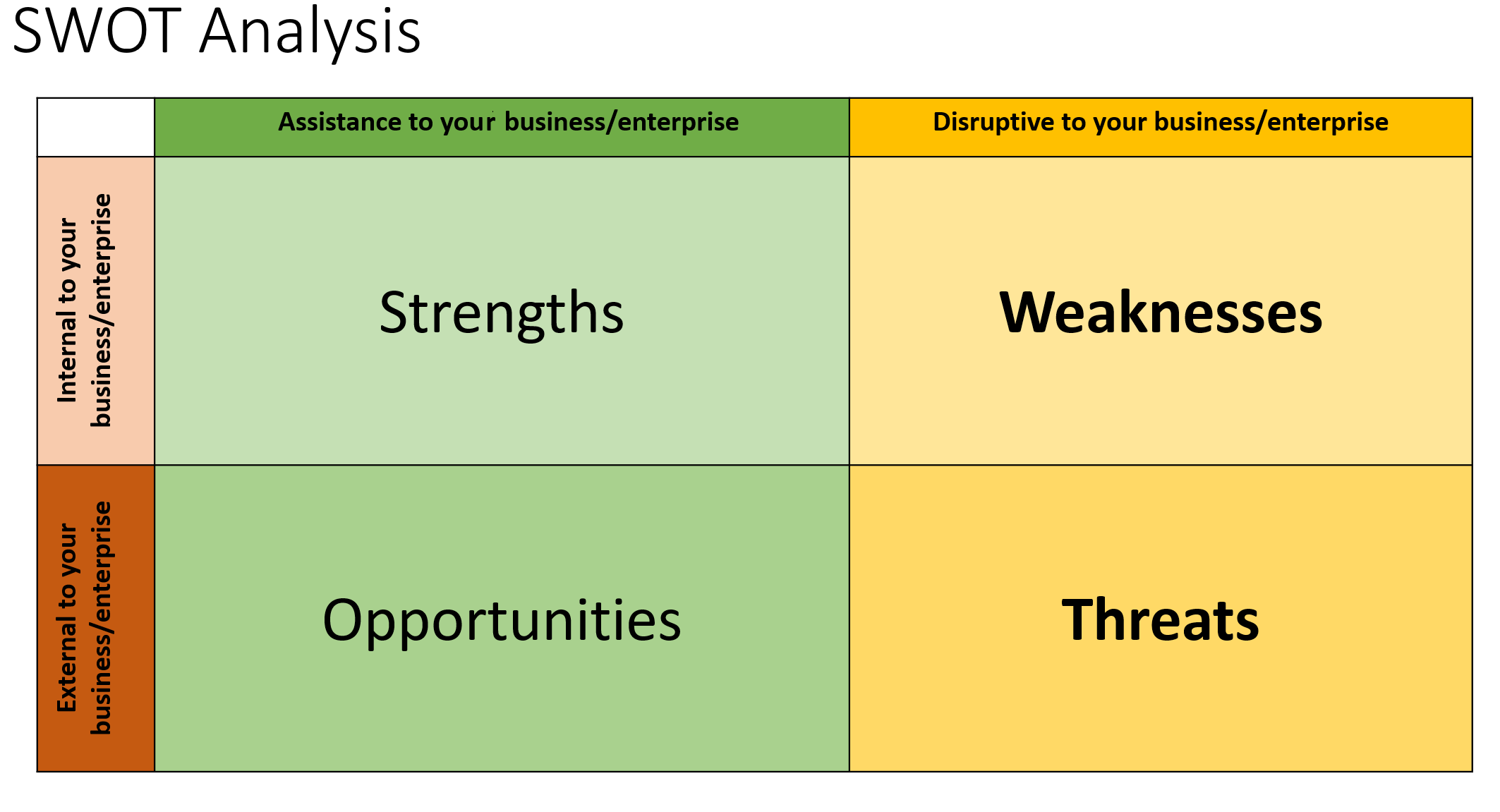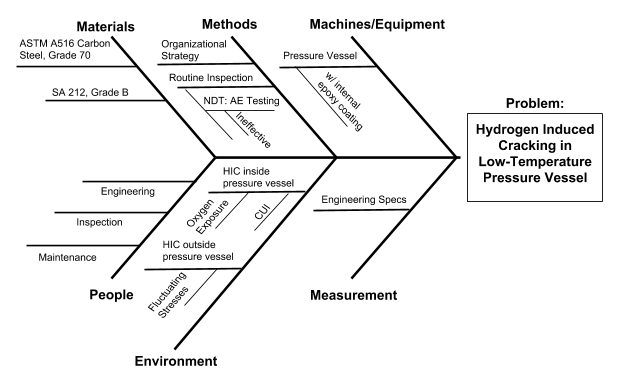Problem Solving:
Practical Tools and Techniques
Experiential Education

When solving problems, dig at the roots instead of just hacking at the leaves.
Objectives
What will you learn?
- An introduction to problem solving
- The different stages of problem solving
- Tools and techniques for defining problems, finding causes, and coming up with solutions
- How to do an action plan
Introduction
Effective problem solving often requires you to collect, process, analyse and evaluate information to find a solution/s. Along with other transferable skills like communication, planning and organisation, teamwork, critical thinking, digital literacy, and active inquiry (for example), it is essential in work and life more generally.
There are a few different stages in the problem solving process, which makes it a little more complicated than it probably sounds. For example, you first have to define the problem, then collect more information about it and do some research and investigations into causes. After that, you need to process the material to understand it, and then analyse and evaluate it (whilst generating possible solutions along the way). The final solution/s and action plan then come from there.

Stages in the Problem Solving Process
There are various stages to problem solving. We have described those that we see as key in the process, starting with recognising the problem to begin with and defining and labelling it; through to solving it, evaluating it and planning for contingencies. In connection with this, we have introduced certain problem solving tools and techniques that can be used at each stage. This is because some methods work better at different stages than others. The methods are presented in more detail in the section following this one, titled ‘Tools of the Trade’.
So, what are the key stages in the problem solving process?
There are generally 7 steps in the process (American Society for Quality, 2021; Deakin, 2021; de Hann & de Heer, 2015; Robinson, 2017). However, you may find that some practitioners and academics will combine some of the steps into one. You may therefore find some models with only four or five steps. In this module, we outline 7 steps and the various tools and techniques you can use under each one. Although we present these in a linear way, problem-solving is a cyclical or iterative process, so it is okay to work in that way.
Key Stages
- Problem Recognition – determining what the problem is
- Labelling the problem
- Conducting a problem-cause analysis
- Optional solutions
- Making a decision based on the best options you have generated
- Developing an action plan to solve the problem
- Evaluating and monitoring your solution to the problem
- Contingency planning and resource examination

Problem Recognition
This first stage is where you identify the symptoms. You look for facts and analyse data, as well as explore history and human factors such as attitudes, values and reactions (soft data). Symptom identification can be achieved through collecting all kinds of data, including through interviews and focus groups, brainstorming and mind mapping. More on these methods can be found later in this module.
Define and Label the Problem
It is important to have a clear definition of the problem otherwise the solutions generated will not work. This is because the solutions you come up with will not necessarily address the actual problem (i.e. ‘the real problem’ or ‘key stone’). For example, if you define the problem as being poor performance by employees, when in fact it is a lack of training or high expectations, the solutions generated to address the problem are unlikely to be effective.
In this stage, it is good to write down some problem statements. Begin by noting the problem and why it is important to solve. Consider the benefits to solving the problem. For example:
- Costs
- Consumer satisfaction
- Employee wellbeing
- Time
- Product quality
- Greater efficiency (e.g., in a process)
From there, we recommend that you:
- Identify the stakeholders (the people and organisations that the problem directly affects)
- Find the root cause of the problem (sometimes we identify the symptoms rather than the actual problem – this leads to generating ideas that do not address the root cause)
The tools we recommend to help you define the problem and determine the cause (including the root cause) are:
- The 5W’s (and the 5 WHY’s)
- SWOT Analysis
- Mind Mapping
- Brainstorming
- The Fishbone Diagram (or Cause and Effect Diagram)
- Affinity Mapping
To explore some of these further, see below under ‘Tools of the Trade’.

Generate Ideas and Solutions
After defining the problem and finding the root cause, you need to generate ideas and solutions. This usually happens through brainstorming and mind mapping. These are good techniques for generating ideas quickly (and just getting it all down).
These methods help to generate thought not only around problem statements, definitions or causes (in stage one) but about potential solutions, impacts, and much more. These techniques are more concerned with ‘quantity’ in terms of getting as many ideas as possible, rather than ‘quality’. You can also do a force-field analysis in this stage or positive and negative analysis.
To explore brainstorming and mind mapping, please see below under ‘Tools of the Trade’.

Decide on the Best Solution
Once you have generated optimal solutions, you then need to make some decisions about what to choose. There are many decision-making tools that can be used. Some of these include:
- Brainstorming as many ideas as possible (quantity matters more than quality with this technique).
- Elimination - in business it is important to select the best solution which involves a process of elimination.
- Weighting of consequences – after you have decided on the best solution, weigh up all of the consequences or outcomes against it.
- Prioritising - you may have several solutions with good outcomes but you need to now select the best.

Take Action
Once you have arrived at a your solution, to your problem, an action plan should be developed. Elements to include in your action plan could be a series of questions such as those below. There are no hard and fast rules on what to include in your action plan. However, it must be highly effective in solving the problem or problems. It must be well thought through, achievable and highly relevant to your business.
Some elements to include in your plan may be:
- What is to be done?
- How is it to be done?
- Who is responsible?
- When will it be done by?

Tools and Techniques
This section of the module provides some detail on problem solving tools – and when to use them. Not all possible tools are described but we have tried to include those that are often used in business/enterprise.
The 5W’s and the 5 WHY’s
The 5W’s approach is most useful when defining the problem and then later on when identifying if more data or analysis is required.
In most cases, you can define a problem by noting:
| WHAT | What are the attributes of the problem – what is the issue?
You can ask the ‘what question’ repeatedly to drill down as well. For example, if a what question points to skill shortages as a problem, you would then ask, ‘what skills?’ if the answer is ‘communication skills’, you would ask ‘what communication skills’? |
| WHERE | Where is the structural or physical location of the problem?
|
| WHEN | When does the problem occur e.g. are there certain times or days? When does the problem need to be fixed? When will we implement a solution? |
| WHO | Who are the people affected by the problem? Who is the source of the problem? Who are the key stakeholders involved in the problem (including customers, partners/external parties, employees)? Who will decide if we have solved the problem? |
| WHY | Why do we need to solve the problem? Why is this happening to begin with? Why are people reacting in certain ways? The why question gets to the underlying causes of the problem and contributing factors. Quite often the why question is asked 5 times. This is to ensure drilling down as much as possible to find the root causes. This part is called the 5 whys, which is considered an approach to root cause analysis. The point being to find causes to the problem not symptoms. |
(American Society for Quality, 2021; Mahalik, 2021)
SWOT Analysis
SWOT analysis is a strategic planning tool that is used to generate information on which rigorous, logical, defendable decision can be based. As the diagram highlights, SWOT stands for Strengths, Weaknesses, Opportunities and Threats.
To complete a SWOT Analysis for your business/company/enterprise or workplace, start with asking the following questions:
Strengths:
- What advantages (e.g. location, resources, facilities, etc.) does your enterprise have?
- What do you do better than anyone else?
- What make your enterprise unique? (Think about costs, resources, facilities or geographical locations etc. you identified above.)
- In addition, view your strengths by placing yourself in your competitor’s shoes?
Weaknesses:
- What would you need to do to improve in your enterprise?
- What would you avoid doing in your enterprise or what to improve in your enterprises position?
- View your weaknesses, by placing yourself in your competitor’s shoes? What are your weaknesses?
- What aspects of your enterprise is costing you sales?
Opportunities:
- What are the best opportunities for your enterprise to improve?
- What are the future trends emerging in your industry, and how aware of these are you?
- These may be new technology and changes in markets internationally or nationally.
- Consumers consumption patterns may be changing based on perceived healthy, clean, safe, environmentally produced practices.
- Governments (international and domestic) may change policies related to your enterprise activities.
- Social patterns, population profiles, lifestyle changes and demographics etc. may change.
- Operating environments (Social, Economic, Environmental) in which your enterprise operates may be changing.
Threats:
- What impediments, obstacles and barriers does your enterprise face in its operating environment?
- Are your competitors changing their practices and their mode of operation?
- Are the food safety, quality standards, or specifications under which your enterprise operates (work place health and safety, labour force costs and tax requirement etc.), or the products changing due to consumer demands or government policies locally, state wide, nationally and internationally?
- Is globalisation, communications and changes technology threatening your enterprises position to remain sustainable, viable and grow?
- Management of your enterprise (Human Resources, Material Resources, Financial Resources etc.)?
- What is your true economic situation (cash flows, capital investment, bad debts etc/)?
- What is your social standing and position in the industry?
- What is your environmental situation (pollution, chemical usage, fertiliser, irrigation etc.) and your industry position?
- What factors can seriously threaten your enterprise and threaten your operating practices?
To explore SWOT Analysis further (and to find blank templates to use) please follow this link to a module on SWOT Analysis
Mind Mapping
Mind mapping is an effective means to brainstorm and collect your thoughts. A mind map is a diagram that visually organises information and involves writing down a central theme/concept and thinking of new and related ideas which radiate out from the centre.
By focussing on key ideas written down in your own words and looking for connections between them, you can map knowledge in a way that will help you better understand and retain information.
To see an example from the contemporary issues and sustainability unit, look below. You will see a mind map by Dr Nissen of economic, environmental and social issues that enterprises may face (and various strategies and plans that can be used to sustainably manage these issues). The map shows you a way of viewing how to undertake the process. It is best to produce a mind map that is suited to your own agricultural enterprise.
Find more on Mind Mapping here including examples.
Brainstorming
Brainstorming is a popular group problem-solving technique.
A desktop search of definitions of brainstorming revealed that it is typically referred to as a technique for:
- Group thinking sessions (where all ideas are collected)
- Stimulating creative thinking
- Spontaneous participation
- Group problem-solving (around a specific question or challenge)
- Generating new ideas or creative solutions (drawing on lateral thinking/thinking outside the box)
- Ensuring all ideas are captured and nothing is criticised or critiqued until the later analysis stage
If you are interested in exploring the method of brainstorming beyond this brief description, please follow this link to a short module on Brainstorming.
The Fishbone
A fishbone analysis is often useful for trying to organise information generated from a root cause analysis, brainstorming or mind mapping exercise. You input this information into a fishbone diagram i.e. a picture of a fish where you write the main problem in the head, then record causes in the spines. The best way to do this is to write the problem as a statement or question and then add to the backbones of the fish with potential causes.
The picture below provides an example of what a fishbone diagram looks like.
For other examples and access to fishbone templates, please click here.
GoLeanSixSigma also have a great Excel tool for fishbone diagrams:
Affinity Mapping
After you have undertaken the initial research on a topic, affinity mapping is a useful strategy to visualise and categorise this information. It is an effective and dynamic way of recording the qualitative and quantitative data you have collected such as on-site observations and interviews. The first step to affinity mapping involves documenting your findings on separate sticky notes, followed by grouping them according to topics (e.g. trends, challenges, themes) and then categorising them with headings. Be prepared to move your sticky notes around; affinity mapping is a dynamic process.

References
American Society for Quality (ASQ). (2021). 5 Whys and 5 Hows.
https://asq.org/quality-resources/five-whys
American Society for Quality (ASQ). (2021). Problem Solving.
https://asq.org/quality-resources/problem-solving
de Haan, A., & de Heer, P. (2015). Solving Complex Problems: Professional Group
Decision-Making Support in Highly Complex Situations, 2nd edn, Eleven International Publishing.
Mahalik, P. (2021). Using the 5W’s and one H approach to six sigma.
https://www.isixsigma.com/implementation/basics/using-five-ws-and-one-h-approach-six-sigma/
Pokars, S. (1989). Systematic problem solving and decision-making.
The Viability Group, Inc. USA.
Robinson, S.I. (2017). Problem Solving Perspectives from Cognition and
Neuroscience, 2nd edn, Routledge, London and New York.

